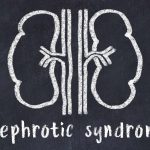
Hereditary Angioedema in Children – Types, Causes and Symptoms by Dr. Sagar Bhattad
8 min readWritten by Sindhuja Prabhu


Swelling of body parts is a common phenomenon we all experience in various instances in regular life. When it comes to kids, the frequency can be more due to their active and carefree manner of exploring the environment around them. Sometimes, this inflammation may not be an innocent swelling but something more serious like hereditary angioedema in children.
Yes, swelling can be hereditary too. A rare genetic disorder that can cause unnecessary and unexpected swelling in your child can be quite alarming. Does your child have hereditary angioedema? Do you or anyone in the family have it, making you worried about your child inheriting this rare disorder too? Here is all you need to know about this genetic condition.
In This Article
- What is Hereditary Angioedema?
- At What Age Does Angioedema Start in Children?
- Causes of Hereditary Angioedema in Children
- Types of Hereditary Angioedema
- Triggers For Hereditary Angioedema in Children
- Symptoms of Hereditary Angioedema in Children
- Diagnosis of Hereditary Angioedema in Children
- Treatment Options For Angioedema in Children
- When to See the Doctor?
- FAQ’s
What is Hereditary Angioedema?
Hereditary angioedema (HAE) is a rare genetic disorder that causes swelling in various parts of the body under the skin. Sometimes the linings of the gut and lungs can swell as well, resulting in an airway block which can be very dangerous.
HAE is an issue with the immune system where the C1 inhibitor – a protein in the body does not function properly. For some children, the body does not produce enough of this protein; for others, despite having the right levels, the protein may not function properly, resulting in HAE.
At What Age Does Angioedema Start in Children?

Hereditary angioedema is always present in the body of children who have inherited this rare disorder from their family. The symptoms for the same can start showing up when your child is just about 5 years old. As they grow up and reach puberty, the symptoms can get worse.
Since it is genetic, one is born with this issue. However, the frequency and severity of the attacks vary from one child to another. With the advancement of science, doctors can successfully manage HAE with effective and timely medication. If you know your child has HAE, it is important to be proactive and attend to symptoms without any delay.
Causes of Hereditary Angioedema in Children
So, we know HAE is a hereditary condition, but what is the exact cause for this malfunctioning of the immune system?
Our bodies contain a variety of proteins which have their own roles to play. C1 inhibitor is one such protein. When this particular protein is not produced in sufficient quantities or does not function properly, it can make the tiny blood vessels push fluid into the areas around it. When these parts of the body fill up with fluid, it leads to swelling in those areas.
Inflammation is a natural response of the body to an attack like infections or injuries. This inflammation is controlled by protein and various other elements in the body. When these work together in sync, it results in swelling during an attack, which will later subside as the body heals.
The C1 inhibitor is responsible for controlling inflammatory response in the body. Low production of C1 inhibitors will result in excessive production of Bradykinin (a peptide that promotes swelling). As a result, a child with HAE can experience sudden bouts of swelling in various parts of the body.
Types of Hereditary Angioedema

As the name suggests, this disorder is hereditary, meaning it is genetically passed down from generation to generation. Different causes result in different types of hereditary angioedema. The three types are
1. Type 1
In type 1 HAE, the production of the C1 inhibitor is not normal. Usually, it is lesser than the required amount which can trigger other responses resulting in swelling in various body parts.
2. Type 2
In type 2 HAE, the body produces the right amount of C1 inhibitor, but they don’t function as expected. So, this may not increase bradykinin production, but the body may not handle inflammations effectively. As a result, another protein called C4 will be used every time swelling occurs. This in turn may reduce the C4 level in the body.
3. Type 3
Yes, there is a type 3. In this type, the production of coagulation factor XII protein is affected. As a result, more bradykinin is produced, leading to swelling episodes. In this case, C1 inhibitor is normal.
Hereditary angioedema is classified as an autosomal dominant inheritance. This means the presence of just one copy of the altered gene is sufficient to cause this disorder. So, one can receive the altered gene from just one parent or suffer a new mutation in the concerned gene resulting in HAE despite no family history of the same.
Triggers For Hereditary Angioedema in Children

Hereditary angioedema is a genetic disorder that is not preventable and there is no cure. It is a reaction by the body, which can be triggered by
- Dental procedures
- Colds, flu, and other similar illnesses
- Surgery
- Stress or anxiety
- Constant typing or hammering
In all of the above scenarios, the body undergoes a type of trauma, to which the immune system will respond to protect the body. The immune response need not be restricted to just these triggers. If something else seems to trigger your child’s HAE, take note of it and discuss it with your doctor.
Make note of the following
- How soon the attack happens after exposure to the trigger
- The timeframe that the attack lasts for
- How severe the attack is
When you identify the trigger for your child’s HAE, you can be proactive and prevent the same in the future.
Symptoms of Hereditary Angioedema in Children

Hereditary angioedema is very similar to hives. While hereditary angioedema causes swelling under the skin, hives cause swelling on the surface of the skin. A significant difference between hives (allergy) and HAE is the fact that hives cause intense itching while HAE seldom causes itching. We all experience swelling for a variety of reasons. It can be confusing, and one may not realize the swelling in a child is due to HAE.
One of the most common symptoms of HAE in children is the appearance of swelling in the following parts.
- Face
- Hands
- Feet
- Mouth or throat
- Belly
- Genitals
Of the above symptoms, swelling in the throat or mouth is the most dangerous. If the lung lining swells, it can cut the airflow, resulting in breathing difficulty, which can quickly become fatal. If you notice your child is struggling to breathe, you need to rush them to a hospital immediately.
In most cases, you may even notice the following warning signs before you notice the above-mentioned symptoms
- Muscle aches
- Fatigue
- Abdominal aches
- Tingling sensation in various parts of the body
- Headaches
Diagnosis of Hereditary Angioedema in Children

Diagnosing hereditary angioedema can be tricky. Since swelling is a body’s natural reaction to various types of attacks, one may not think much of it until the frequency is too much or the attack is severe. When you consult a doctor, the diagnosis can take place in the following manner:
1. Collecting Information
Collecting information about the various episodes that led to HAE suspicion is very important. Since such swellings can happen anytime at varied intensities, your doctor will need enough information to make a proper diagnosis. One small instance of unexplained swelling may not be sufficient to confirm HAE.
2. Getting Family History
Since it is a hereditary disease, your doctor will try to understand your child’s family history. This may include gathering information about both sides of the parents. If there is a history of hereditary angioedema in the family, your doctor might alter the tests accordingly.
3. Blood Tests
The doctor will prescribe blood tests to ascertain the levels of various proteins. The tests will check the levels of C1 esterase inhibitor and C4. In the case of type 1 HAE, C1 inhibitor levels will be low due to insufficient production of that protein and C4 would also be low. In the case of type 2 HAE, the C4 level will be low due to the depletion of the same due to an increase in use during swellings, while C1 inhibitor levels would be normal but function would be affected.
4. Confirming Diagnosis
Once your doctor has sufficient information about the previous attacks, how long each lasted, how long your child took to recover, and the levels of various proteins in the body, they can confirm the diagnosis. Genetic tests would show mutation in the SERPING1 gene.
Some of the classical symptoms doctors watch out for when they suspect HAE are
- Repeated swellings – especially in the limbs or around the face
- Intermittent pain in the abdomen
- Family history with similar symptoms
Treatment Options For Angioedema in Children

Once the doctor confirms HAE in your child, they may opt for the following treatments depending on the extent of the disorder and frequency of attacks.
1. Medications
Since one cannot be very certain of when an HAE attack would occur, how severe it could be, or how many days it will take for it to subside, HAE needs to be managed with the help of medications. Some effective medicines can get the attack under control or even help prevent one if taken at the right time.
C1 inhibitor injection can be given IV to abort a severe attack. This drug has recently been marketed in India and can be life-saving in case of an HAE attack involving the airway. If a C1 inhibitor is not available, fresh frozen plasma (FFP) can be used for treatment as an alternative.
Drugs like tranexemic acid and anabolic steroids (danazol, stanzolol) can be used to prevent future attacks.
2. Others
In case of respiratory issues or breathing difficulty, your child might even require oxygen support.
When to See the Doctor?
If your child presents any of the symptoms mentioned earlier or has sudden swelling due to no apparent reason, you need to check with your doctor at the earliest. Sometimes, severe attacks can be hard on a child’s body and will require immediate medical intervention.
If you have a family history of HAE, you should not ignore any swelling or recurrent inflammations. You need to inform the doctor about the family history and express your concerns. This will encourage your doctor to consider the possibilities of this rare genetic disorder.
Hereditary angioedema is a rare genetic disorder that you have no control over. If your child suffers from this condition, you need to understand the disorder, accept the challenges and be proactive. If you can prevent or react quickly to an attack, you will be able to minimize the damage to your child’s body.
FAQ’s
1. What is Hereditary Angioedema?
It is an inherited condition caused by low or dysfunctional C1 inhibitor. Children and adults who suffer from HAE have recurrent episodes of swelling of various parts of the body.
2. Is Hereditary Angioedema Life-Threatening For Children?
If your child’s HAE is diagnosed early and the child is put on an effective treatment plan, it need not be life-threatening. However, if the swelling happens around the lung lining, it can cut off the air supply, which can quickly become fatal.
3. Who is at the Most Risk For Angioedema?
Children with a family history of HAE (either mother or father or both parents’ sides) are at a higher risk of inheriting the disorder. In very rare cases does HAE occur without a family history and the exact reasons for such a disorder are still not clear.
Read Also: Systemic Lupus Erythematosus(SLE) in Children by Dr. Sagar Bhattad

Sindhuja Prabhu,M.Sc (Psychology),PGDBM
Sindhuja, a mother of two, is an obsessive mom with a keen interest in psychology, especially child psychology. Her quest for knowledge and way with words led her to become a passionate content writer. She transformed her love for writing into a full-fledged career which incidentally also turned up being the perfect stress buster for the last 5 years.Read more.
Responses (0)
Want curated content sharply tailored for your exact stage of parenting?
Related articles
Sponsored content
Discover great local businesses around you for your kids.
Get regular updates, great recommendations and other right stuff at the right time.











